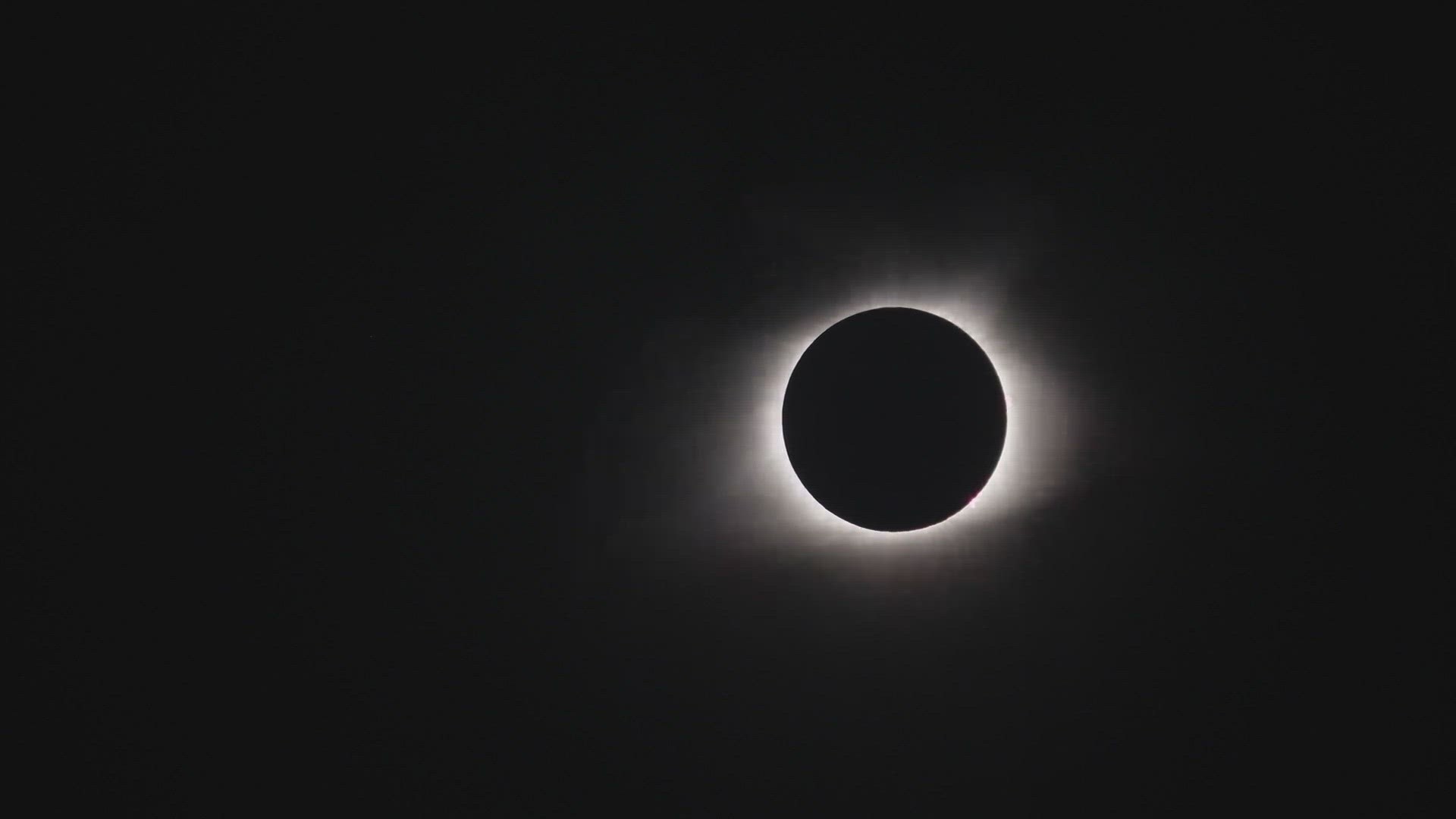DALLAS — On April 8, a total solar eclipse will cast the shadow of the moon, commonly called the Umbra, on a narrow path across the Earth. The result will be the path of totality reaching communities from Texas to Maine.
Through a partnership with Dallas’s Perot Museum of Nature and Science, WFAA will be the only local television station hosting anchored live streaming coverage from the Perot Museum’s extraordinary Great North American Eclipse event, offering North Texans the opportunity to safely experience this once-in-a-lifetime phenomenon.
An annular eclipse, which is what occurred last fall, is not a total eclipse. This is due to the distance between Earth and the moon. In an annular eclipse, a "ring of fire" is visible around the moon. During a total eclipse, the moon is closer to the earth and it perfectly aligns with the sun creating total darkness.
Here is why this April total eclipse is so special for DFW:
- The last time DFW experienced a total eclipse was 1878.
- On April 8, 2024, DFW will experience 4.5 minutes of totality – the longest amount of totality in the country.
- Dallas is the largest metropolitan area in the line of totality.
- After April 8, DFW will not experience a total eclipse for an estimated 300 years.
- The next opportunities for total eclipses in the United States are 2044 (North Dakota and Montana) and 2045 (California to Florida – totality will be in Oklahoma).
There are many online resources and maps to figure out how long the eclipse will last near you. On Eclipse2024.org, you can type in your city or town and find precise timings and simulations.


For anyone who plans to view the eclipse, you must have properly certified solar glasses to do so safely.
A limited number of tickets to the Perot Museum’s Great North American Eclipse watch party went on sale on Feb. 1 on the museum’s website at perotmuseum.org.
More Texas headlines:

